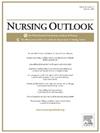Emergency department visits among children with asthma: Racial/ethnic disparities before and during the COVID-19 pandemic
IF 4.1
2区 医学
Q1 NURSING
引用次数: 0
Abstract
Background
Emergency department (ED) visits for asthma among school-aged children create substantial healthcare burdens.
Purpose
This study aimed to examine the longitudinal trends in asthma ED visits, focusing on the effects of sociodemographic factors (i.e., age, sex, and race/ethnicity) and pandemic influence among school-aged children before, during, and after the pandemic.
Methods
We used a large, longitudinal, multisite data of 6,312 school-aged children from 2017 to 2022. Negative binomial regression was used for data analysis.
Discussion
Stable patterns with higher ED visit rates in Hispanic and Black children were observed prior to the pandemic. During the pandemic, sharp declines in ED visits were observed across all groups, with Black and Hispanic children sustaining higher rates compared with White children.
Conclusion
Higher rates of ED visits continued for Black and Hispanic children. Future interventions should focus on improving the effects of racial disparities and incorporating effective strategies for asthma management.
哮喘儿童的急诊就诊:COVID-19大流行之前和期间的种族/民族差异
学龄儿童哮喘病急诊科(ED)就诊造成了巨大的医疗负担。目的:本研究旨在研究哮喘急诊就诊的纵向趋势,重点关注社会人口统计学因素(即年龄、性别和种族/民族)的影响以及大流行之前、期间和之后对学龄儿童的影响。方法采用2017 - 2022年6,312名学龄儿童的大型、纵向、多地点数据。采用负二项回归进行数据分析。讨论在大流行之前,西班牙裔和黑人儿童的稳定模式与较高的急诊科就诊率被观察到。在大流行期间,所有组的急诊科就诊人数都急剧下降,黑人和西班牙裔儿童的就诊率高于白人儿童。结论黑人和西班牙裔儿童的急诊科就诊率持续升高。未来的干预措施应侧重于改善种族差异的影响,并纳入有效的哮喘管理策略。
本文章由计算机程序翻译,如有差异,请以英文原文为准。
求助全文
约1分钟内获得全文
求助全文
来源期刊

Nursing Outlook
医学-护理
CiteScore
6.20
自引率
7.00%
发文量
109
审稿时长
25 days
期刊介绍:
Nursing Outlook, a bimonthly journal, provides innovative ideas for nursing leaders through peer-reviewed articles and timely reports. Each issue examines current issues and trends in nursing practice, education, and research, offering progressive solutions to the challenges facing the profession. Nursing Outlook is the official journal of the American Academy of Nursing and the Council for the Advancement of Nursing Science and supports their mission to serve the public and the nursing profession by advancing health policy and practice through the generation, synthesis, and dissemination of nursing knowledge. The journal is included in MEDLINE, CINAHL and the Journal Citation Reports published by Clarivate Analytics.
 求助内容:
求助内容: 应助结果提醒方式:
应助结果提醒方式:


